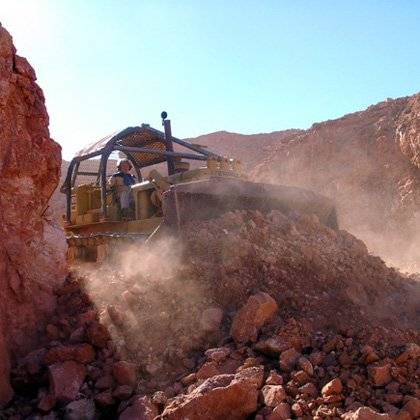How is Opal Mined?

Opal mining in its simplest form can be carried out by a single miner working on his own. A solitary miner digging for opal will use a process known as shaft sinking. This traditional technique involves the use of a shovel and a pick to create a downward shaft. When a miner finds 'opal dirt' located deep within these shafts, the miner will then begin digging sideways in order to determine the 'level' of opal dirt. The sideways digging process may typically involve both picks and small explosive charges. A miner may then use screwdrivers and handpicks to extract opal stones carefully, without causing damage to them.
Drilling
In larger mining processes, a Caldwell-type drill may be used. A Caldwell-type drill is effective in creating deep vertical passages that have a diameter of approximately one metre. Once these holes have been created, a hand windlass connected to buckets will then be used to remove dirt, waste material and mullock. In recent years though, the hand windlass and bucket technique has come to be replaced with power winches and bucket tippers.
While some areas that are excavated may be abundant in opal, there are still a number of difficulties miners face in identifying where to sink shafts. Miners will need to look for 'opal dirt' and then follow 'seam opal' and this is no easy task. Opal lines that begin with potch twists, often change direction and even disappear as a consequence of the high pressures exerted over the years.
Tunneling
The 1970s saw the first use of large tunneling machines to extract opal. These machines incorporate small underground front-end loaders and cutting heads that make it easier and quicker for miners to extract opal. Drilling tests can now be conducted to identify whether certain regions are capable of handling large amounts of pressure and mining. Alternatively, jackhammers, explosives and pickaxes may also be used. Unwanted and valueless rock and soil can be removed with the use of bulldozers.
Opal mining is conducted very carefully in Queensland. The first step of the process involves the strategic removal of rock and stone that places unwanted pressure on ironstone boulders. Once these boulders are excavated, they are sent for processing. Miners at Yowah though, often still use traditional methods like shaft sinking.
When traces of opalization have been discovered on a boulder, it is swiftly removed from the excavated region so that miners can look for further opal content. Opals mined from such boulders retain a thin backing layer of ironstone.
Noodling
Locals also conduct their own form of opal mining by searching for traces of opal in mullock that has been discarded. A noodling machine uses ultra-violet light to inspect mullock in search of opal.
Identifying regions that are rich in opal has become more challenging in recent years, as most productive areas have already been exhausted. Nevertheless, a number of companies continue to undertake well-funded and well-equipped explorations to discover new opal mining sites.


